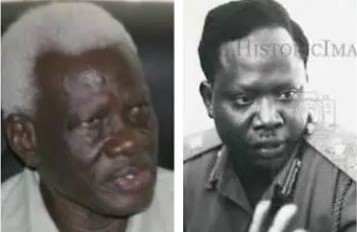In 1971, as the Addis Ababa Agreement of 1972 was being negotiated to end the First Sudanese Civil War, President Jaffar Numeiry made a telling decision. Instead of attending the talks himself, he delegated Abel Alier—a South Sudanese lawyer and his close confidant—to represent him.
On the surface, this might have seemed like a gesture of inclusion. In reality, it meant that South Sudanese were left to negotiate among themselves, with Alier representing Khartoum’s interests and Joseph Lagu representing the southern resistance.
The agreement, brokered under the auspices of the All Africa Council of Churches and Ethiopian Emperor Haile Selassie, was historic—but deeply flawed. It shelved the demand for secession, allowed only limited self-rule, and promised development that never came. Internal divisions within the Anyanya movement were glossed over to form a fragile Autonomous Regional Government. Key terms were never honored. Economic development was promised but never delivered.
President Numeiry exploited the growing rift between Alier and Lagu, who became bitter rivals. He used this tension to redivide the South into its old provincial units, tightening Khartoum’s grip. Alier emerged as the first President of the Southern Sudan Autonomous Region, effectively winning over Lagu.
This pattern of exclusion and manipulation did not end with Numeiry. Successive regimes in Khartoum, regardless of ideology, shared one common denominator: the systematic exclusion of Southern Sudanese from influential roles in civil service, the private sector, and public life.
Today, we see echoes of that same exclusion—only now, it is coming from within. The Juba regime has adopted similar tactics, marginalizing entire communities: the Nuer, Murle, Shilluk, Anyuak, and various Equatorian tribes. The very people who once fought for liberation are now sidelined by a system they helped build.
Alier’s protégés, now in powerful positions, continue his legacy of division. Alier himself remains a special advisor to President Kiir, yet he has never publicly condemned the tribalism and nepotism that plague the government. As South Sudan’s first lawyer and a Dinka elder, he could have been a unifying figure. Instead, he is remembered by many as the architect of tribalism, nepotism, and corruption.
It was Alier who, after the collapse of the 1972 agreement, helped position his nephew, Dr John Garang, to take over the Anyanya II movement from Gai Tut Yang—who was later killed. Garang then formed SPLM, overshadowing the contributions of the Nuer and the Equatorians who had reignited the resistance.
The first liberation movement, Anyanya I, was led by Equatorians like Joseph Lagu. The second, Anyanya II, was Nuer-dominated. However, history was rewritten by those who had the power to do so. After Garang’s death, the SPLM was seized by the Dinka of Bahr el-Ghazal, sidelining the Dinka Bor faction to which Alier belonged.
Now, the Dinka Bor are paying the price for their past political maneuvering, as the Warrap elite consolidates power. What goes around, comes around.
South Sudan’s struggle was never just against Khartoum. It has always been a struggle for justice, inclusion, and dignity. Until we confront the internal betrayals and the legacy of leaders like Alier, we will remain trapped in a cycle of division and disappointment.
The writer, Paul Ruot Bayoch, is a South Sudanese M & E Specialist. He can be reached via paulruotbayoch@gmail.com
The views expressed in ‘opinion’ articles published by Radio Tamazuj are solely those of the writer. The veracity of any claims made is the responsibility of the author, not Radio Tamazuj.




